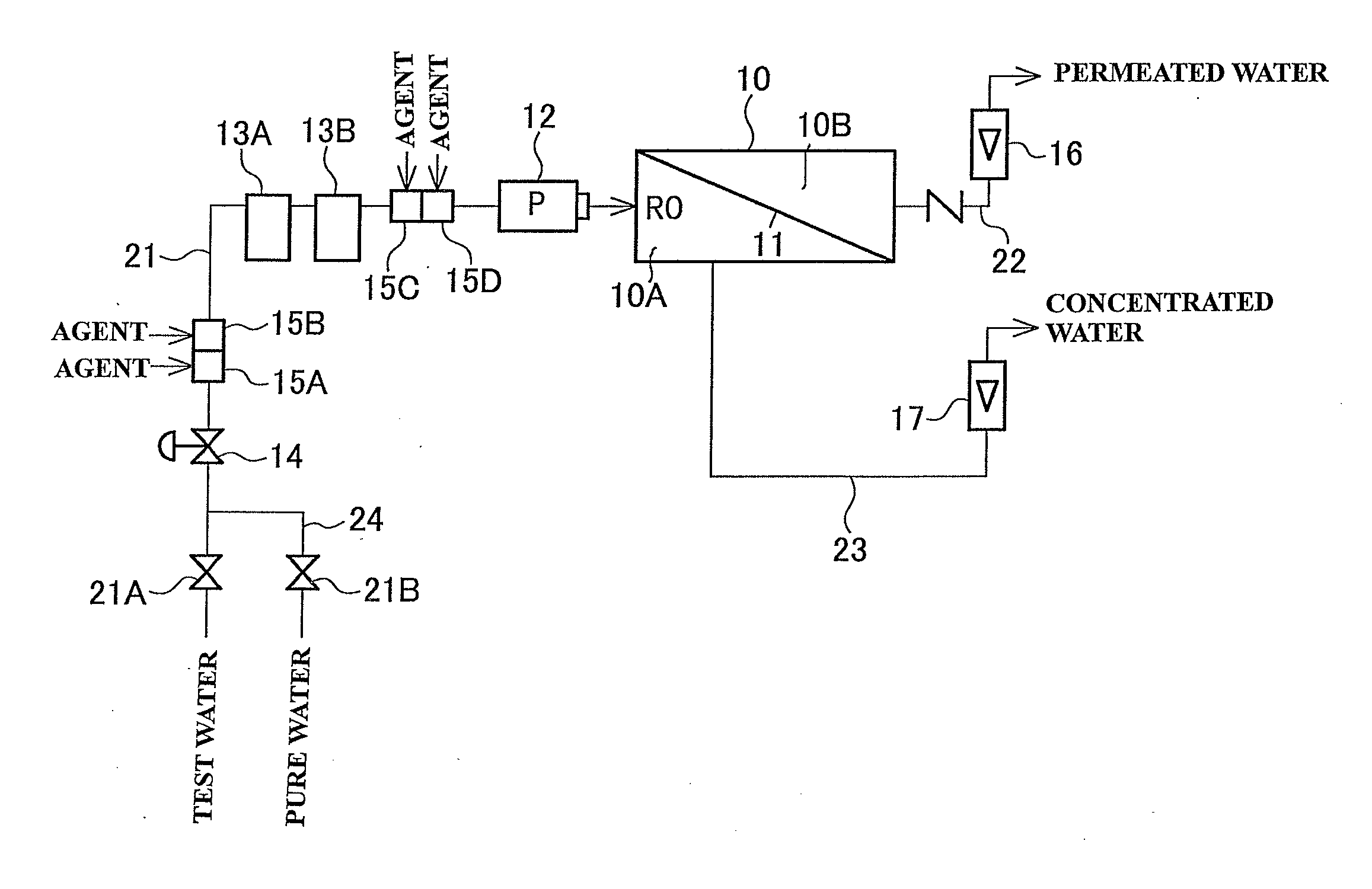Method of improving rejection of permeable membrane and permeable membrane
- Summary
- Abstract
- Description
- Claims
- Application Information
AI Technical Summary
Benefits of technology
Problems solved by technology
Method used
Image
Examples
example 1
[0143]Amino treatment water was prepared by adding 5 mg / L of 3,5-diaminobenzoic acid, 5 mg / L of aminopentane, and 10 mg / L of polyvinylamidine (molecular weight: 3500000) to test water (an aqueous solution containing 2000 mg / L of NaCl) and adjusting the pH to 6. This amino treatment water was fed to the flat membrane testing device, and the device was operated under this condition for two days. Subsequently, ultrapure water was fed for washing, and then the test water was fed to the flat membrane testing device.
example 2
[0144]Amino treatment water was prepared by adding 5 mg / L of 3,5-diaminobenzoic acid and 5 mg / L of aminopentane to test water (an aqueous solution containing 2000 mg / L of NaCl) and adjusting the pH to 6. This amino treatment water was fed to the flat membrane testing device, and the device was operated under this condition for two days. Subsequently, ultrapure water was fed for washing, and then the test water was fed to the flat membrane testing device.
example 3
[0145]Amino treatment water was prepared by adding 10 mg / L of 3,5-diaminobenzoic acid to test water (an aqueous solution containing 2000 mg / L of NaCl) and adjusting the pH to 6. This amino treatment water was fed to the flat membrane testing device, and the device was operated under this condition for two days. Subsequently, ultrapure water was fed for washing, and then the test water was fed to the flat membrane testing device.
PUM
| Property | Measurement | Unit |
|---|---|---|
| Acidity | aaaaa | aaaaa |
| Volume | aaaaa | aaaaa |
| Volume | aaaaa | aaaaa |
Abstract
Description
Claims
Application Information
 Login to View More
Login to View More - R&D
- Intellectual Property
- Life Sciences
- Materials
- Tech Scout
- Unparalleled Data Quality
- Higher Quality Content
- 60% Fewer Hallucinations
Browse by: Latest US Patents, China's latest patents, Technical Efficacy Thesaurus, Application Domain, Technology Topic, Popular Technical Reports.
© 2025 PatSnap. All rights reserved.Legal|Privacy policy|Modern Slavery Act Transparency Statement|Sitemap|About US| Contact US: help@patsnap.com



